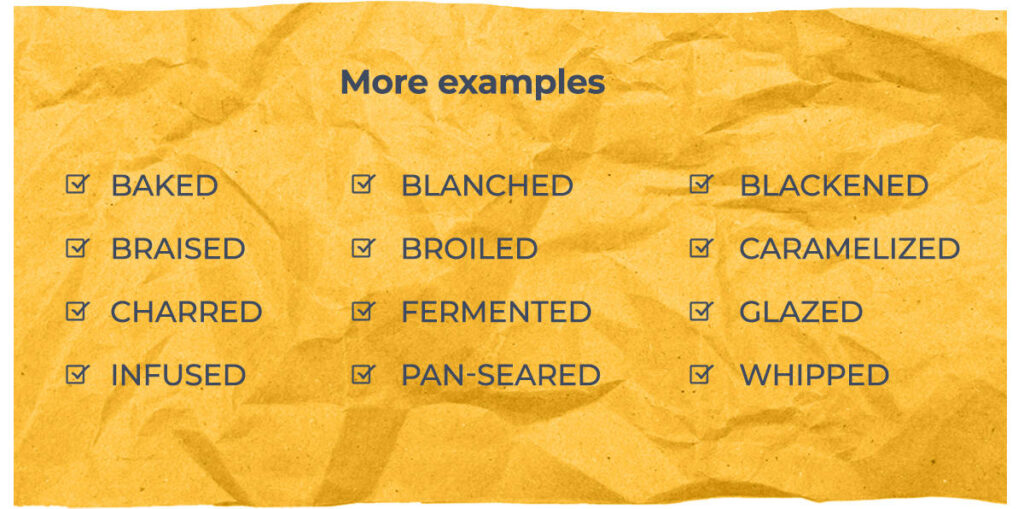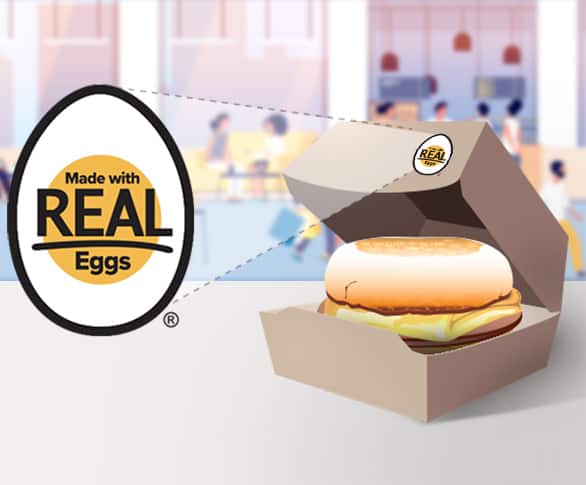SELLING YOUR SELECTIONS
Once you’ve chosen your menu mix with must-have and signature items, the next step is conveying their uniqueness. Here you elevate the ordinary by broadening its appeal and concentrating on what’s extraordinary about it. Learning what language to use on your menu to connect with diners is what will set your restaurant apart and keep customers coming back.
MENU STORYTELLING TIPS
Get descriptive when writing about your food and use words that evoke emotion but avoid getting long-winded. Consider just one or two of the following menu writing tips to whet the appetite of your time-starved customers.
Tip: Add value to an item by noting its origin
Cheddar cheese is a straightforward way to describe the type of cheese. It does the job but doesn’t really tell its story. Using a few more modifiers, you can cue diners in to the quality of the ingredient being used. This will let them know they’re getting something quite special.

This elevates your menu item to a premium position, which might enable you to command a premium price. If there’s a story to be told, get specific about an ingredient’s origin, i.e., Eagle Valley Farm Bacon. Any cultural or geographic reference, like “Spanish,” “Cajun,” or “Peruvian,” will add value.
Tip: Consider giving a little backstory
Is a menu item a family recipe? How long has it been in the family?
Is it something you came up with while traveling? What inspired you to create the dish?
Example: Church Street BBQ Chicken Pizza – a family favorite on our annual trips to Burlington, Vermont.
Also, nostalgic terms can help build a story, like homestyle, traditional or Grandma’s.
Feel free to get specific about the cut, breed, method of raising or harvesting of items on your menu.
Examples: Berkshire Pork Chop, Grass-Fed Beef, Hand-Picked Oranges, Line-Caught Trout
Tip: Elaborate on preparation methods
Pork Chops become Wood-Fire-Grilled Porkchops.

Tip: Describe Texture

Tip: Avoid the obvious
There are certain descriptors that are assumed, such as “fresh,” “made in house,” vegetables “from the garden,” or “grilled just right.”
Tip: Give a nod to dietary regimens
If it pertains, let your customer know if the dish satisfies their dietary preferences.
- Organic
- Gluten free
- Farm-raised
- Locally sourced

Made with REAL Eggs® Seals
Enhance your menu with our Made with REAL Eggs® seal. Add it to menu descriptions or place it on menu boards, fresh prepared foods, and prepackaged grab n’ go items. The Made with REAL Eggs® seal quickly and positively communicates to diners that menu items are made with all-natural, U.S.-produced REAL eggs.
Give your patrons confidence in the quality and authenticity of your menu items by using this complimentary seal.

